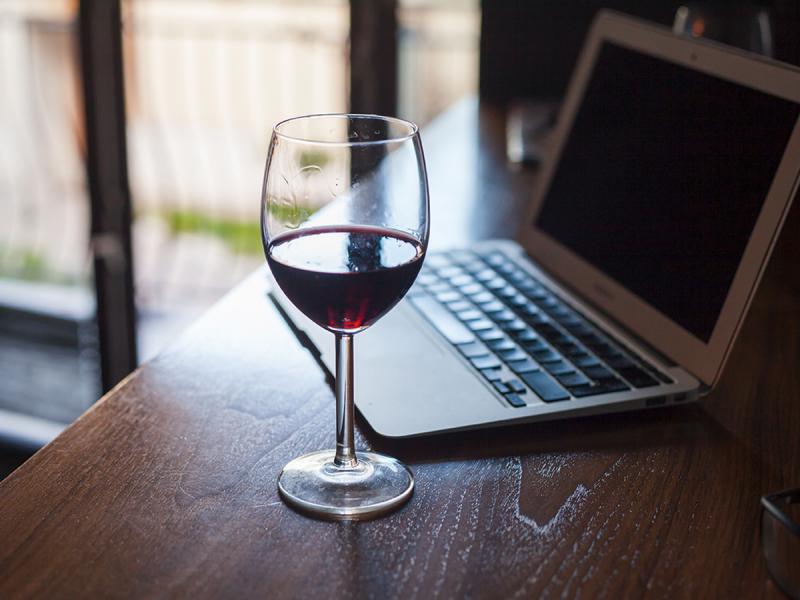Happy Mother’s Day! Don’t forget a card or a call and a nice present. Or, best of all, making dinner for her or taking her out for dinner and a movie, depending on your circumstances. Bringing the entire family over and leaving behind a pile of dirty dishes and glassware may not be the best idea, no matter how happy Mom is to see the grandchildren.
Search for Vignobles Mayard Chateauneuf-du-Pape Clos du Calvaire, any vintage since 2006. It’s a consistent, top-flight producer, and the 2012, ‘13, ‘15 and ‘17 are excellent buys. Purchase for consumption, not resale. The 2013 is best now, but your wine store pal may be able to locate a split case of three each for right around $360. The 2013 just opened its drinking window and should cellar at least 10 years. Read labels carefully; Mayard produces several levels of CdP. All are solid, but some are 30 percent more expensive and possibly 1 point higher rated. Calvaire is terrific entry-level buy. While I’m on this, please support your local stores. Sadly, according to Coresite Research, 5,994 store closures have been announced already this year compared to 5,864 in 2018. Can you spell “Amazon”? How about consolidation? I have no axe to grind. However, I do worry about diversity in the industry. We don’t need another great dumbing-down, a la the 1990s, that drove so many unique profiles from the market. The positive side is, and think about this, how many had even heard of Aglianico, Aligote, Banyuls, Bual, Carmenere, or even Marsanne, Rousanne and Torrontes until the exposure explosion the internet has brought? Even Anthony Hopkins thought Chianti, liver and fava beans were a good combo, or maybe it was the lack of wine/food sophistication of an otherwise terrific writer.
Brother Lew is in Portugal. He wrote to ask if I liked Alvarinho. Most of us, until very recently, named this lovely summer sipper Albarino. Joao Cabral Almeida Camaleao Alvarinho 2017 is a wonderful example of the wine. Most critics say 90 points. It is on offer under $20. Case buyers may be able to get it for $225. A light, pale-green color, very dry with 13 percent ABV, fruit forward, creamy and acid-crisp like a green apple, with plenty of mineral/acidity lift to support the fruit palate, 91 McD points. Nice, spicy, fresh finish. Improved as it warmed in its glass. Don’t drink too cold; I think 60-65 degrees.
I follow Oliver Styles. His turns of phrase are normally refreshing and lighthearted. Here’s an excerpt from an April 27 article, “Turning a critical eye on wine critics,” written during En Primeur, at Kendall Jackson. “The most interesting stuff came from the discussions that went on continuously between tasters. I'm still bemused that Decanter does not release their post-tasting panel discussions as podcasts. Although three middle-aged white people in a prandial fug after a lineup of 60 new-release Barolos is going to be a hit-or-miss affair without editing.” En Primeur is buying wine from barrel sampling before it's bottled and released onto the market. Only unmixed cases can be purchased. They are usually delivered 2-3 years after the vintage. This is not for the faint of heart, novice winos or those who don’t handle disappointment easily. Read the full article here: www.wine-searcher.com/m/2019/04/turning-a-critical-eye-on-wine-critics. As an aside, I wonder how the editors missed the “white people” non-PC reference.
There are several black people who are winemakers in Napa. Oddly, most are women. Oddly in the sense that so few have written about them. The story of the McBride sisters and Truvée Wines is particularly worth reading. I don’t want to keep pushing you from our pages, but this Vinepair site illuminates 10 African-American vintners: vinepair.com/articles/10-african-american-winemakers-know. I will try to sample some of their wine and write of them in a future article. It was surprising to learn that the black community market represents $1.2 trillion, approximately the size of Canada’s economy. A couple of articles claimed ads directed at the black community were “hood.” They bemoaned the lack of appreciation of the huge increases in education, affluence and the attendant changes in taste this engenders, which is enjoyed by their community.






















































